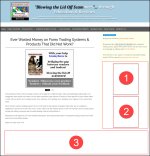- Home
- Forex Articles
- Forex Trading
- Artificial intelligence in Relation to Forex Trading
Artificial intelligence in Relation to Forex Trading
by Zahir Shah
The NVIDIA® DGX-1™is described as the world’s first purpose built system for deep learning and AI accelerated analytics, delivering performance equal to 250 conventional servers. It comes fully integrated with hardware, deep learning software, development tools, and runs popular accelerated analytics applications. This means you can immediately shorten data processing time, visualise more data, accelerate deep learning frameworks, and design more sophisticated neural networks.
You don't have to be a computer expert to realise that's an incredible machine. And no doubt there's many HFT algorithmic traders, located in hedge funds and investment banks, using VPS services located as close to exchanges as physically possible, who'll already be using similar 'state of the art' equipment to trade the markets. They access the markets in milliseconds, it's as close to front-running the markets as humanly (or robotically) possible. These HFT traders and fund managers will react to high impact news events, or developing market conditions, the instant they're published.
This speed advantage highlights (once again) an interesting dilemma; if you can't beat them don't join them. Mortal retail traders cannot possibly compete with traders looking to bet fortunes on, for example, a one pip move inside milliseconds. Which is why many analysts and trading tutors will advise that, for the vast majority of privateers, day trading and swing trading should be the optimum trading methods adopted.
Moving that discussion aside, it's other issues we want to concentrate on in this article, namely where the growing influence of AI and the incredible processing speeds we'll see, might take us in the very near future.
Trading using AI
Most of us are already using AI to trade, if you're using any form of automation then you're taking the first steps into a world that quants at investment banks and hedge funds are completely familiar with. Add automation to the recent improvement of: broadband speeds,low spreads, slick platforms and trading in ECN environments and we can gauge just how far the industry has come in a relatively short period of time. For us "old-school" traders, who remember being quoted (over the phone) a twelve pips spread on cable and waiting up to a minute to be told our order was in the market, the advancements over the past decade or so have been outstanding, fantastic (in the true sense of the word).
With AI and by using a super computer at home, our retail trading world inside the next decade will be unrecognisable from that which we experience today. We look at a computer such as an Apple Mac 27" costing circa $2,000 and forget that such speeds and quality twenty five years back would have been the preserve of NASA scientists only, with unlimited budgets. Proportionately the cost would have been (in real terms) similar to the DGX-1, assuming anyone could have imagined beyond the basic Mac at the time, or visualised how the internet would change our world.
Now we're entering a new chapter of development, as AI will grow in tandem with super computers becoming common place in the home. So let's just hypothetically propose a scenario where these developments can take us in the not too distant future and we'll deliberately focus on what's highly realistic and probable inside the next decade, versus any science fiction fantasy.
Firstly, let's deal with the DGX-1 specifically; imagine a VPS service that hosted your automated trading program on a shared server basis. Instead of a free VPS you share the cost of the DGX-1 with 1,500 other traders paying $1,000 a year rent. To a computer with such capacity, a hosting requirement of this magnitude would only represent a small use of its power.
Secondly, imagine a scenario whereby rather than code and programme your MetaTrader platform with your automation, you can 'think' your programme into your platform. Perhaps you also could use a form of Oculus Rift augmented reality to trade, as opposed to a mouse and keyboard. With the trading platform intuitively taking your market instructions and orders based on your previous trading habits, orders which can only counter demanded verbally by your voice recognition.
The scenario we've just outlined is tantalizingly in reach now. When underpinned by broadband speeds increasing exponentially and spreads on, for example, EUR/USD potentially being crushed 0.05 we can begin to visualize just how exciting the future for retail trade is. But just hang back on that Nvidia order, let's wait for the price to crash.





